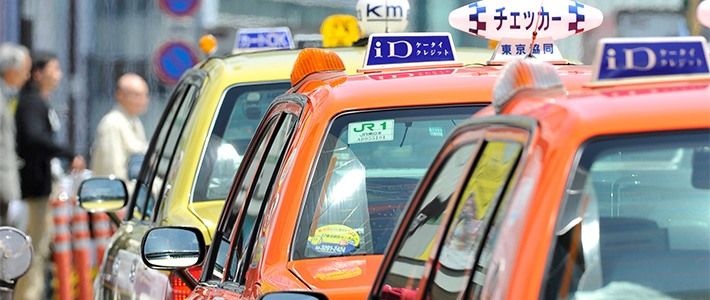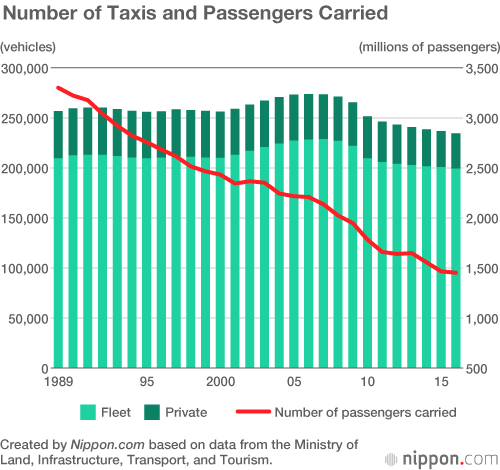
Less Late-Night Work and Play More than Halve Japanese Taxi Usage Compared with Bubble Era
Society- English
- 日本語
- 简体字
- 繁體字
- Français
- Español
- العربية
- Русский
In 1989, when Japan’s economic bubble was at its peak, the annual number of taxi passengers throughout Japan exceeded 3.3 billion. In night-time entertainment districts, such as Ginza and Roppongi in Tokyo, many people made their way home on their company’s tab by using taxi coupons, caring little about when the last train home was running. They were so popular, it was often difficult to locate a cab.
After the bubble economy collapsed, Japan went into a recession, causing a steady fall in the number of taxi passengers. At the beginning of the 2000s, this decrease temporarily leveled off, but the 2008 global financial crisis brought the economy to another standstill, and the number of taxi users once again declined. Even when corporate profits recovered, companies maintained cost-saving measures, while in recent years the trend of curtailing overtime work has become more widespread. These two factors have had a stifling effect on the taxi industry.
In 2016, there were 1.45 billion passengers, which is 44% of the 1989 level. Meanwhile, the number of cabs only dropped by 10% in the same period. These days, it is easy to find a taxi, and the lines waiting for customers in night-time entertainment districts stretch into the distance.

A recent initiative aims to stop the decline in the number of taxi passengers. On January 30, 2017, the taxi-fare system underwent a radical change in the 23 municipalities of central Tokyo, and the western Tokyo cities of Musashino and Mitaka. The basic taxi fare was modified from ¥730 for the first 2 kilometers to ¥410 for the first 1.052 kilometers in an aim to stimulate demand for short-hop rides, such as to a nearby department store or other impulse destination. Also, as the number of tourists visiting Japan is growing, some taxi companies are recruiting more foreign drivers who can speak other languages in addition to Japanese.
(Translated from Japanese. Banner photo © Jiji.)